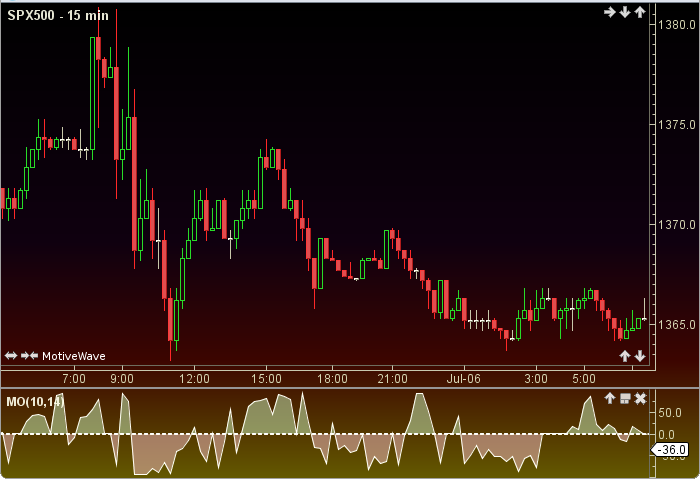Widner Mobility Oscillator Transforming the Future of Motion Technology

Motion technology is rapidly evolving, and innovations in this field are driving advancements across a wide range of industries. One such breakthrough that has gained significant attention is the Widner Mobility Oscillator. This innovative technology is reshaping the way we approach motion systems, offering solutions that enhance efficiency, reduce energy consumption, and improve the overall functionality of motion-based applications.
In this article, we will explore the concept of the Widner Mobility, its working principles, its applications, and the profound impact it is having on the future of motion technology. By understanding the potential of this system, industries can leverage its advantages to create smarter, more sustainable systems for the future.
What is the Widner Mobility Oscillator?
The Widner Mobility is a state-of-the-art device designed to optimize and control motion systems with remarkable precision. Unlike traditional oscillators that focus primarily on producing continuous waveforms, the Widner Mobility integrates advanced principles of mobility and dynamic response to enhance motion control across various fields. The technology is specifically engineered to provide a more efficient and controlled way of managing oscillatory motions, making it a key player in industries ranging from robotics and transportation to manufacturing and energy management.
This oscillator utilizes an intricate mechanism that allows for enhanced stability and adaptability in motion systems. The system adjusts the frequency, amplitude, and phase of oscillations dynamically, which leads to more precise control and less energy waste. By optimizing the motion process, the Widner Mobility Oscillator plays a crucial role in reducing friction and improving the overall performance of devices that rely on oscillation.
The Working Principle of the Widner Mobility Oscillator
The Widner Mobility Oscillator operates by dynamically adjusting the frequency, amplitude, and phase of oscillations to optimize motion control, minimize energy loss, and maintain stability under varying operational conditions.
Oscillation Frequency and Amplitude Control
The Widner Mobility Oscillator can modulate the frequency and amplitude of oscillations to meet the specific needs of an application. This dynamic adjustment ensures that the motion produced is not only accurate but also energy-efficient. By optimizing these parameters, the system minimizes the energy lost to friction, leading to better performance and longer device lifespans.
Feedback Systems and Dynamic Response
Another key feature of the Widner Mobility is its integration with sophisticated feedback systems. These systems continuously monitor the performance of the oscillator and adjust the motion parameters accordingly. This dynamic response is essential for maintaining stability and efficiency in environments where motion systems are subject to varying conditions or external forces.
By continuously adapting to changing conditions, the Widner Mobility ensures that the motion remains smooth and consistent, even under stress or unpredictable circumstances.
Applications of the Widner Mobility Oscillator
The versatility of the Widner Mobility makes it suitable for a wide range of applications. Below are some of the key areas where this technology is having a transformative impact:
Robotics
In robotics, precision and energy efficiency are paramount. The Widner Mobility Oscillator allows robots to move with greater accuracy and reduced energy consumption. By optimizing the oscillatory motions involved in robotic movements, the system ensures smoother operations while minimizing mechanical strain. This is particularly important in industries like manufacturing, where robots are required to perform repetitive tasks with high precision.
Transportation Systems
In transportation, especially in electric vehicles (EVs) and automated transport systems, the Widner Mobility plays a pivotal role in enhancing motion control. By controlling the oscillations of various components, such as motors and wheels, the system ensures smoother rides, better fuel efficiency, and less wear on the components. This technology could lead to more sustainable transportation systems by reducing the energy required for motion and improving vehicle longevity.
Energy Management
Energy consumption is a significant concern in many industries. The Widner Mobility Oscillator helps address this issue by optimizing the energy transfer in oscillatory systems. This efficiency is especially useful in energy-harvesting applications, where small movements are converted into electrical energy. By improving the motion control in these systems, the oscillator helps increase the amount of usable energy generated, making renewable energy solutions more viable.
Manufacturing and Industrial Automation
In manufacturing, precise motion control is crucial for producing high-quality products. The Widner Mobility enhances the precision of automated machinery, ensuring that movements are perfectly synchronized. This optimization leads to reduced errors, fewer product defects, and more efficient production lines. In addition, the system’s energy-efficient nature helps reduce operational costs in industrial settings.
The Advantages of the Widner Mobility Oscillator
The adoption of the Widner Mobility Oscillator brings several key benefits to industries that rely on motion systems.
Improved Efficiency
One of the primary benefits of the Widner Mobility is its ability to optimize motion efficiency. By reducing the energy lost to friction and other inefficiencies, the system helps devices operate more smoothly and consume less energy. This increased efficiency not only leads to lower operational costs but also reduces the environmental impact of these systems.
Enhanced Precision
Precision is a critical factor in many motion-based applications. Whether in robotics, manufacturing, or transportation, the Widner Mobility ensures that movements are precise and consistent. This enhanced precision translates to better performance, fewer errors, and higher-quality products or services.
Cost Reduction
By improving energy efficiency and reducing wear and tear on mechanical components, the Widner Mobility helps lower maintenance costs. Its ability to reduce energy consumption also results in lower operational expenses, making it a cost-effective solution for industries across the board.
Environmental Benefits
With a growing focus on sustainability, the Widner Mobility Oscillator helps contribute to more eco-friendly technologies. Its efficiency reduces the overall energy consumption of systems, leading to a smaller carbon footprint. Additionally, by extending the lifespan of mechanical components, the oscillator contributes to reducing waste and promoting more sustainable practices in manufacturing and other sectors.
The Future of the Widner Mobility Oscillator

The potential applications of the Widner Mobility Oscillator are vast, and as technology continues to evolve, its role in shaping the future of motion control is becoming more significant. The ongoing development of this technology will likely lead to even more advanced versions with improved performance and greater adaptability.
Integration with AI and IoT
One exciting future development for the Widner Mobility is its potential integration with artificial intelligence (AI) and the Internet of Things (IoT). These integrations could allow the oscillator to make real-time adjustments based on data from sensors and external devices. This intelligent system could lead to even greater efficiency, precision, and adaptability in motion-based technologies.
Advancements in Energy Harvesting
As the demand for renewable energy solutions grows, the Widner Mobility could play an even larger role in energy harvesting applications. Its ability to optimize small oscillatory movements could make it a key component in next-generation energy-harvesting systems, contributing to the development of more efficient and sustainable power sources.
New Horizons in Automation
In the realm of automation, the Widner Mobility Oscillator could pave the way for more advanced and efficient robotic systems. By enabling more precise control of movement, it could lead to robots that are capable of performing complex tasks with higher accuracy and fewer errors. This could have far-reaching implications in industries such as healthcare, where robots are increasingly used in surgeries and patient care.
Conclusion
The Widner Mobility is undoubtedly transforming the landscape of motion technology. Its ability to optimize motion efficiency, improve precision, and reduce energy consumption makes it a game-changer in a variety of industries. From robotics and transportation to manufacturing and energy management, this innovative technology is reshaping how we approach motion-based systems.
As we look to the future, the potential of the Widner Mobility Oscillator seems limitless. With advancements in AI, IoT, and energy harvesting, this technology could become even more integral to creating sustainable, efficient, and precise motion systems. The Widner Mobility is not just a tool; it’s a transformative force that will help shape the future of motion technology for years to come.





